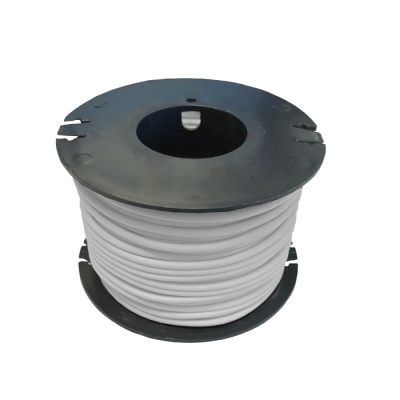Thanks to the better availability of materials, the wet room has become a desirable addition to many homes, offering a sleek and modern alternative to traditional shower cubicles or baths. They are highly functional but also provide a minimalist, open-plan feel that’s perfect for creating a spa-like atmosphere. If you’re thinking about transforming your bathroom into a wet room, using coloured wall cladding is an excellent option for adding both style and practicality.
Wall cladding comes in a range of finished and colours, offering endless possibilities to create a unique, bespoke look for your wet room. Lets explore how to choose and install coloured wall cladding in your wet room, ensuring that you get the perfect balance of aesthetics and functionality.
Why Choose Coloured Wall Cladding?
Coloured wall cladding has several advantages, making it a popular choice for wet room installations. First and foremost, it’s a practical solution for wet environments. Unlike traditional tiles or paint, cladding provides a seamless, water-resistant surface that prevents the build-up of mould or mildew. This makes it ideal for wet rooms, where high moisture levels are common.
Additionally, coloured wall cladding allows you to add character and personality to your space. Whether you’re looking for a calming pastel shade, a bold, vibrant hue, or something more neutral, the variety of colours available means that you can tailor the design to suit your taste and the overall theme of your home.
Types of Coloured Wall Cladding for Wet Rooms
There are various types of wall cladding to choose from, depending on your budget, preferences, and the look you’re going for. Let’s take a closer look at the most popular materials:
- PVC Wall Cladding
This is a popular option for wet rooms due to its affordability and ease of maintenance. PVC wall cladding is waterproof, easy to clean, and available in a range of colours and finishes. It’s also lightweight and simple to install, making it a great choice for DIY enthusiasts. The smooth surface ensures that water won’t seep behind the cladding, which is crucial in a wet room setting. - Acrylic Wall Cladding
Acrylic is another waterproof material that offers durability and a glossy finish. It’s a more premium option compared to PVC, and you’ll find it in an array of colours and designs. Acrylic cladding is resistant to discolouration and scratches, which ensures that it’ll maintain its fresh, clean appearance over time. It’s particularly well-suited for contemporary or minimalist designs. - Stone Resin Cladding
For a more luxurious feel, stone resin cladding combines the look of natural stone with the functionality of modern materials. Available in various colours, stone resin offers a tactile surface that can mimic the look of marble or slate. This option is perfect for creating a sophisticated, spa-like wet room while still being highly practical and easy to clean. - Laminate Cladding
If you’re on a budget, laminate wall cladding could be the right choice. While it may not offer the same durability as other materials, it still provides a decent level of water resistance. Laminate cladding is available in a wide range of colours and patterns, including some that mimic the look of natural materials like wood or stone. Just ensure that the laminate is designed for wet environments to avoid any damage from moisture.
How to Choose the Right Colour
Selecting the right colour for your wet room is crucial to achieving the desired atmosphere. Whether you want to create a serene and calming space or an invigorating, energising environment, your choice of colour can have a significant impact on the overall feel of the room. Here are some considerations:
- Light Colours: Light shades such as whites, greys, or pastels can make a small wet room feel more spacious and airy. They are ideal for creating a clean, fresh aesthetic and can be combined with light-coloured flooring and accessories for a unified look.
- Bold Colours: If you prefer a more dramatic effect, bold colours such as deep blues, greens, or even dark greys can add a touch of luxury to the space. These colours work particularly well in larger wet rooms or when paired with contrasting fixtures and finishes.
- Neutral Tones: Shades like beige, taupe, or light browns can create a warm, inviting atmosphere. Neutrals are incredibly versatile and can be paired with various colours and textures for an elegant and timeless look.
- Customised Designs: Some manufacturers offer cladding that comes with customisable patterns, textures, or even integrated LED lighting. You can get creative with abstract designs, geometric patterns, or even wall panels that replicate the look of brick or stone.
The Installation Process
Installing coloured wall cladding in a wet room is a relatively straightforward process, though it’s important to get it right to ensure long-term performance. Here’s a general guide to follow:
- Preparation
Start by preparing the walls. If you’re updating an existing bathroom, remove any old tiles or wallpaper and ensure the walls are smooth and free of dust or debris. It’s also a good idea to ensure that the wall is properly waterproofed with a suitable membrane or tanking system before applying the cladding. - Measuring and Cutting
Measure the height and width of your walls to ensure that your cladding will fit perfectly. Most cladding is sold in panels, which can be cut to size with a saw or specialised cutting tool. Be sure to wear protective gear and measure twice to avoid any mistakes. - Applying Adhesive
Depending on the type of cladding, you may need to apply a waterproof adhesive to the wall before securing the panels. For PVC or laminate cladding, you may be able to use a strong adhesive or a cladding-specific bonding solution. - Securing the Panels
Once the adhesive is applied, press the panels firmly against the wall, ensuring they are level and aligned. For larger panels, you may need to use a temporary support or clamps until the adhesive sets. If the panels have interlocking edges, make sure they fit together snugly to prevent water from seeping through the joints. - Sealing the Edges
Finally, seal the edges and joints with waterproof silicone sealant to prevent moisture from getting behind the cladding. This step is critical in a wet room where water exposure is constant.
Maintenance Tips for Coloured Wall Cladding
The beauty of wall cladding is that it’s incredibly easy to maintain. Here are a few tips to keep it looking its best:
- Clean regularly: Wipe down the panels with a damp cloth and mild soap solution to keep them free from soap scum and watermarks. Avoid abrasive cleaners that can scratch the surface.
- Check for loose panels: Occasionally, inspect the panels to ensure they remain securely attached and that the sealant hasn’t started to degrade.
- Ventilation: Ensure your wet room is properly ventilated to prevent moisture build-up and potential mould growth. An extractor fan is a good investment in a high-moisture area.
Creating a wet room with coloured wall cladding is an exciting way to transform your bathroom into a stylish, functional space. Cladding Monkey offer a range of coloured cladding in both Gloss and Satin finishes. Take a look at our range today.


































